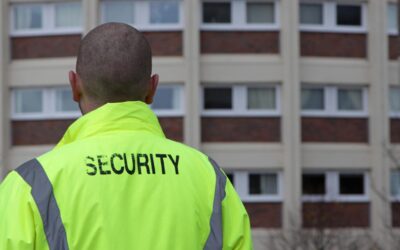Lone Working: Looking at Key Risk Assessment Questions

Brian Sims, Media Solutions Manager, UBM Live Security & Fire Portfolio
23/04/2013
According to the European Agency for Health and Safety at Work: Employers are required to evaluate risks to safety and health and take action to improve the level of protection given to workers. This process is called a risk assessment, and involves identifying hazards and assessing the associated risk.
Such assessments or security risk analyses are essential for every organisation. Only by conducting these exercises can those who hold the purse strings be absolutely sure that the controls in place and the expenditure aligned with them are fully commensurate with the risks to which any given organisation is exposed.
Drilling down to the micro level, it’s also true to say that risk assessments around employees are equally vital. No more so than when it comes to members of staff who work alone. The Corporate Manslaughter Act and companies’ Duty of Care to staff as part of today’s CSR policies absolutely set that assertion in stone.>
What factors, though, demand most consideration for a genuinely collaborate risk assessment procedure to be executed between manager and employee?
It’s critical to ask certain fundamental questions. For example, can the work defined be carried out safely by a lone individual? What arrangements need to be put in place to make certain a lone worker isn’t exposed to a greater risk than those who operate in tandem?
In essence, the risk assessment for any lone worker has to pinpoint all potential hazards, identify those who may be affected by the perceived risks, and outline the right control procedures.
Looking specifically at hazards (or threats), does the workplace present a special risk to the lone worker, perhaps because of the environment, its location, or any degree of unfamiliarity with their surroundings?
From a Health and Safety perspective, is the working environment appropriate in terms of, say, lighting and heating? Are welfare facilities (toilets, drinking water, etc.) on site both adequate and accessible? And what about immediate access to first aid facilities should they be needed?
From a pure security point of view, does the lone worker have access to suitable communication devices for summoning assistance? Needless to say this area is always important, and particularly so if there’s any perceived or real risk of violence associated with the work activity or location.
Is there an emergency plan in place, and is it appropriate? Has the employee received specific training in how to respond to emergency situations that may arise in the course of their duties when working alone? Variables such as fire safety or the need for electrical shutdowns ought to be considered.
For their part, control measures are focused on reducing risk and the consideration of alternative work methods/patterns, additional training (around, say, emergency procedures and personal safety) and adequate supervision.
Enhanced on-site security (courtesy of CCTV and personal alarm systems) will likely be part of the mix, so too increased lighting at entrances and exits as well as for external zones like car parks.
As a “must,” all lone workers have to be privy to the necessary information that assists them in dealing with everyday scenarios but they should also understand when, where, and how to seek guidance or assistance from others should they be confronted by threatening or otherwise abnormal situations.
Generally speaking, the level and extent of training required for lone working employees depends largely on the nature of the work to be conducted in addition to the knowledge and experience of the individuals in question. It stands to reason that younger, less “worldly-wise” individuals and those new to the company have to be inducted by way of additional training.
Supervision must also be paramount. The level and degree of this mentoring is determined by the nature of the risks involved in tandem with the aforementioned abilities and experience of each lone worker.
Manual (panic alarms) or automatic (motion sensors) warning devices may come into the mix, along with periodic telephone contact/site visits from managers at set intervals. Regular contact (by way of dedicated radios or telephones) or perhaps “end of shift” or “end of task” contact could be initiated.
At the end of the risk assessment, every lone worker must be made fully aware of the outcome and of all necessary control measures to be orchestrated.
Recent Posts
- Safer Streets, Stronger Communities
- 5 Reasons Why Your Business Needs Security Over Christmas in Oldham, Stockport, and Beyond
- Affordable Security for Greater Manchester’s Small Businesses
- Why Your Business Needs Professional Security: Protecting Assets, Reputation, and Peace of Mind
- Why Mobile Patrol Services Are the Cost-Effective Security Solution for Oldham Businesses





